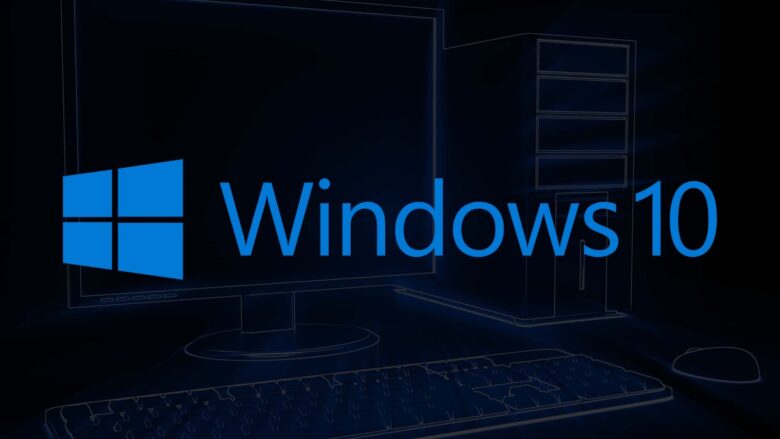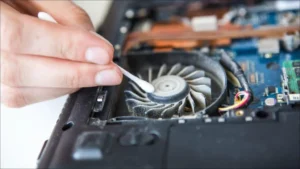Microsoft Windows 10 is one of the world’s most popular operating systems. Millions of users love its smooth and user-friendly experience. But like all software, it sometimes encounters problems that can lead to reduced stability, reduced functionality, or slower performance. Users often experience minor but annoying computer issues, such as slow startup, system crashes, and Wi-Fi connection problems. Fortunately, you can resolve most of these issues without seeking professional assistance. With patience and knowledge of the relevant procedures, you can quickly and easily resolve common Windows 10 problems, keeping your computer running smoothly.
Fixing Common Windows 10 Problems
To fix Windows 10 problems, in most cases, you first need to understand where the problem lies. Many users experience slow performance, applications that don’t work, or unexpected system crashes. Some also experience issues such as updates that don’t install, sound that doesn’t work, or frequent Wi-Fi disconnections. Most often, outdated drivers, poor program compatibility, corrupted system files, or an excessive number of background processes cause these problems. Identifying the problem will help you troubleshoot it more effectively and ensure your computer remains stable in the long run.
Troubleshooting Performance and Slow Startup Issues
One of the biggest problems Windows 10 users experience is a slow computer. As you add more applications and programs to your system, startup and response times can increase. A simple solution is to disable unnecessary applications that launch automatically at startup. You can manage this in Task Manager so that only the most important applications are launched. You can also free up hard drive space and speed up your system by deleting unnecessary temporary files and data. Additionally, ensure that you’re running the latest version of Windows 10. Microsoft is constantly adding new features to improve system speed.
Troubleshooting Windows Update Issues
Windows Update is designed to improve system security and speed, but occasionally the update process can falter, causing errors or service interruptions. If you experience such problems, restarting your computer usually provides a temporary solution. You can also use the built-in Windows Update troubleshooter, which can quickly diagnose and fix common update problems. Clearing the Windows Update cache is also a beneficial method, as it can contain old update files that can interfere with newer files. To prevent these problems in the future, ensure you maintain a stable network connection during the update process.
Troubleshooting Audio and Sound Problems
Sound problems in Windows 10 (such as no sound, distorted sound, or missing volume control) are common. Typically, incorrect audio settings or outdated sound card drivers cause these problems. To resolve this, ensure that your headphones or speakers are properly connected and set as your preferred device for music playback. You can also use the built-in audio troubleshooter to quickly diagnose and resolve sound problems. You can restore full audio functionality by updating or reinstalling your audio drivers in Device Manager. Some minor audio issues can often be quickly resolved with simple actions, such as turning the volume up or down or checking the mute settings.
Fixing an Unresponsive File Explorer
File Explorer is an essential part of Windows 10, allowing you to move and manage files. However, sometimes File Explorer can become slow or unresponsive. Such issues can happen if there are too many files or if the file names are incorrect. In most cases, restarting File Explorer through Task Manager will resolve the issue immediately. You can also improve speed by cleaning up the File Explorer folder and disabling Quick Access. Keeping your system files clean and updated will reduce File Explorer’s lag in the future. If the problem persists, you can usually scan your system to repair corrupted files.
Improving Battery Life on Laptops
If you use Windows 10 on a laptop, you’re probably always worried about short battery life. Excessive screen brightness, unnecessary background applications, and outdated power settings can all shorten battery life. Turning off Bluetooth and Wi-Fi when not in use, switching to power-saving mode, and lowering screen brightness can all extend battery life. It’s also crucial to identify power-intensive applications running in the background. Keeping your system drivers and BIOS up-to-date will help your laptop use less power and have longer charging intervals.
Conclusion
Windows 10 can occasionally have issues, but most are easy to fix if you know what to do. These troubleshooting tips will help you resolve problems like slow performance, update errors, and issues with sound, Wi-Fi, and crashes. They can also save you time and effort. Regular system maintenance, such as updating the system, cleaning temporary files, and managing startup applications, will keep your computer running more smoothly. Learning basic troubleshooting skills will not only help you resolve common problems more quickly but also prevent them from happening in the first place. With these simple tips, you can make Windows 10 run smoother, faster, and more stably every day.
FAQs
1. Why is my Windows 10 PC so slow?
This could be due to too many programs starting up, too much data on your hard drive, outdated drivers, or background applications using excessive system resources.
2. How do I get my Wi-Fi working properly again in Windows 10?
To resolve most connection issues, restart your router, use the built-in network troubleshooter, and ensure your network drivers are up to date.
3. What’s wrong with my Windows Update?
Corrupted files or unstable connections typically cause update errors. Clearing update files and restarting your computer can help.
4. How do I get sound in Windows 10?
Please ensure that your sound card driver is up to date and review your audio settings. You can also use the audio troubleshooter to find and resolve problems immediately.
5. What causes a blue screen in Windows 10?
Blue screen errors are usually caused by faulty drivers, hardware issues, or corrupted system files, which lead to operating system crashes.
6. How can I extend my laptop’s battery life?
To save battery life more effectively, enable power-saving mode, reduce screen brightness, close unused applications, and ensure your drivers are up to date.
7. Is it safe to use the built-in Windows troubleshooter?
Yes, the Windows troubleshooter is a safe way to diagnose and fix common system problems without damaging your files or settings.




